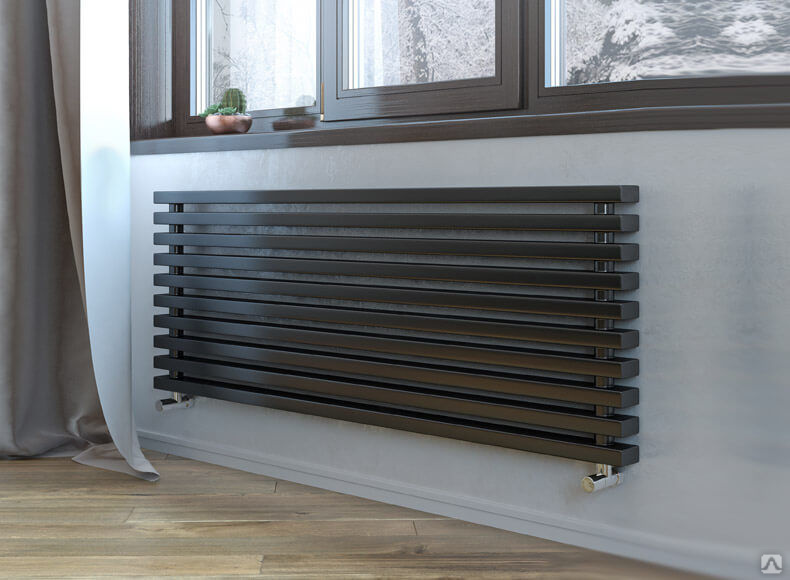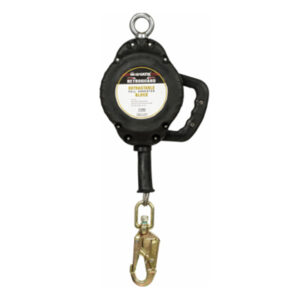
The concept of indoor comfort is a deep, foundational human need. We seek a stable, warm environment, a refuge from the unpredictable world outside. For centuries, the technology to create this warmth was simple, heavy, and slow. We relied on burning wood, then on moving hot water through massive, dense materials like cast iron. These systems worked, but they operated on a principle of storage. They held onto heat, releasing it slowly and often inefficiently. Today, the science of comfort has changed. It has become faster, lighter, and more responsive. The focus has shifted from storing heat to transferring it. This shift is almost entirely due to a change in materials, moving away from heavy ferrous metals toward a lighter, more dynamic element.
This evolution is not just a minor upgrade. It represents a different philosophy of heating. Instead of charging a large thermal “battery” (like a cast iron radiator) and letting it slowly discharge, modern systems are designed to react instantly. They aim to deliver warmth precisely when and where it is needed, working in harmony with smart thermostats and modern, well-insulated buildings. The central hero of this new philosophy is a material we often take for granted, one more commonly associated with drink cans and aircraft: aluminium. Understanding how this single element (Al) reshaped an entire industry reveals how material science is the true, unseen engine of our daily comfort. The story of modern heating is no longer just about the furnace; it is about the molecules that deliver the warmth to your room.
The Unseen Engine of Thermal Transfer
When we analyze the performance of a home heating system, the boiler or furnace often gets all the attention. It creates the heat. But the delivery of that heat is arguably just as important. The efficiency of the entire system, known as the HVAC (Heating, Ventilation, and Air Conditioning) system, hinges on how quickly and effectively that heat can be moved from the water into the air. This is where the material itself becomes the most important factor.
The primary job of a radiator is to be a “heat exchanger.” It must be an expert at moving thermal energy. The single most important measurement for this job is “thermal conductivity.” This is a simple rating of how well a material allows heat to pass through it. Aluminium is an exceptionally strong performer in this area. Its thermal conductivity is approximately 204 Watts per meter-Kelvin (W/mK). To understand this number, we can compare it to older materials. Steel, a common alternative, has a conductivity of around 50 W/mK. Traditional cast iron is similar, at about 55 W/mK. This data is not just trivia; it is the core reason for the shift. Aluminium is roughly four times better at moving heat than steel.
This high conductivity leads to a concept called “low thermal inertia.” This term simply means the material heats up very, very quickly. It does not need to “soak” in the heat. The moment hot water enters it, the metal surface becomes hot. The reverse is also true: the moment the hot water stops, the metal cools down quickly. This rapid response is the primary feature of Aluminium Radiators.
What does this mean for a home? It means the system is responsive. When a thermostat calls for heat, a low-inertia system begins to heat the room almost immediately. It does not waste energy first heating a massive 150-pound block of iron. This speed allows a boiler to reach the target temperature faster and then shut off. This “on-demand” heating cycle can reduce energy consumption. Furthermore, aluminium’s properties allow for designs that use significantly less water. A comparable cast iron radiator might need to hold several gallons of water to function, while its aluminium counterpart might use less than half of that. Less water to heat means less fuel is burned by the boiler to get that water up to temperature.
From Mined Ore to Sculpted Warmth
The unique properties of aluminium are only part of its story. The other part is how it is manufactured. This process is what allows for the modern, efficient designs that are now common. The material does not start as a simple, usable metal. It begins as bauxite ore, which is mined from the earth. This ore is then put through an energy-intensive electrical process, known as the Hall-Héroult process, to separate the pure aluminium oxide and then smelt it into the metallic aluminium we recognize.
This initial creation process does require a significant amount of electricity. This is a fact that must be acknowledged. However, aluminium possesses a redeeming quality: it is almost infinitely recyclable. Once the aluminium is created, it can be melted down and reformed into new products using as little as 5% of the original energy. Statistics from global industry bodies show that around 75% of all aluminium ever produced is still in use today. This makes it a key component of a circular economy. When a radiator reaches the end of its life, its material value is not lost.
The most important manufacturing process for the radiators themselves is “extrusion.” This technique is what unlocks the design potential of the metal. In extrusion, a heated billet (a solid log) of aluminium is forced at high pressure through a specially shaped steel die. This is much like forcing dough through a press to make a specific pasta shape. This process allows engineers to create incredibly complex and precise cross-sections.
Why is this important for a radiator? Because heating efficiency is all about surface area. The more a radiator’s surface touches the air, the more heat it can transfer. Extrusion allows for the creation of panels that have multiple, complex internal fins and channels. These fins, which are impossible to create with old casting methods, dramatically increase the unit’s surface area without increasing its overall size. A single, sleek-looking flat panel might contain an intricate web of internal structures, all designed to maximize contact with the circulating air. This is how a small, lightweight aluminium panel can produce the same heat output, measured in British Thermal Units (BTU), as a cast iron unit many times its weight and size.

The Hidden Chemistry of a Heating System
Introducing a new material into a complex system like a home’s central heating plumbing always presents challenges. The primary challenge for aluminium is not heat, but chemistry. When different types of metals are placed together in water (an electrolyte), a process called “galvanic corrosion” can occur. A typical heating system is a mix of metals. The boiler might have a steel or stainless steel heat exchanger, the pipes are almost certainly copper, and the radiator is aluminium.
These three metals—copper, steel, and aluminium—sit at different places on the galvanic scale. If left unprotected, the aluminium, being the most reactive of the group, can become a “sacrificial” element. This can lead to the metal corroding from the inside out. This sometimes results in tiny pinhole leaks. Another common issue is the creation of hydrogen gas as a byproduct of the corrosion, which can build up in the radiators and require frequent “bleeding” (releasing the trapped air). It can also create a black sludge (magnetite) that damages pumps and valves.
This sounds problematic, but it is a well-understood and entirely manageable scientific problem. The solution is to control the water chemistry. This is done by adding a “chemical inhibitor” to the water in the heating loop. These specialized liquid solutions are essential for any modern heating system, but especially for one containing aluminium.
These inhibitors work in two ways. First, they balance the pH of the water. The pH scale measures how acidic or alkaline a liquid is. Pure water is a neutral 7. Aluminium is most stable in water that is within a specific, narrow pH range, typically between 6.5 and 8.5. If the water becomes too acidic (low pH), it will eat away at the metal. If it becomes too alkaline (high pH), it can also cause corrosion. The inhibitor acts as a buffer, locking the pH in the safe zone. Second, the inhibitor forms a microscopic protective film on the surface of all the metals in the system, preventing the water and dissolved oxygen from ever touching the bare metal. This stops galvanic corrosion before it can even begin. This simple maintenance step is the key to ensuring a long and efficient life for the system.
Sizing, Placement, and Real-World Performance
The science of aluminium’s conductivity and the chemistry of its protection are theoretical. The practical application comes down to putting the right-sized unit in the right place. The end goal, after all, is a comfortable room. The performance of any radiator is measured in British Thermal Units, or BTUs. A BTU is a unit of energy. Specifically, it is the amount of heat required to raise the temperature of one pound of water by one degree Fahrenheit.
Every room in a house has a specific “heat loss” value. This is the amount of heat, in BTUs per hour, that the room loses to the outside on a cold day. This loss is influenced by many factors: the size of the room (length, width, and height), the size and type of the windows (single-pane vs. double-glazed), the quality of the insulation in the walls and ceiling (its “U-value”), and the number of outside walls. A heating professional will calculate this BTU requirement for each room.
Once the BTU number is known, a radiator can be selected. This is where the efficiency of aluminium provides significant advantages. Because of its high efficiency and the complex designs possible with extrusion, an aluminium radiator can provide a high BTU output from a much smaller physical “footprint.” Where a room might have once required a large, bulky cast iron unit, it may now be served by a slim, modern panel. This gives architects and homeowners much more freedom in design.
The way aluminium transfers heat also affects its placement. All radiators transfer heat in two ways: radiation (sending out heat waves, like a fire) and convection (heating the air that touches it, which then rises). Old cast iron models are excellent “radiators,” pushing out radiant heat. Aluminium units, especially modern panel designs, are powerful “convectors.” Their design is intended to draw cool air from the floor, pass it over the large internal surface area of the fins, and exhaust warm air from the top. This creates a continuous, warming air current in the room. For this reason, they are extremely effective when placed under windows. The rising curtain of hot air they create meets the falling cold air from the glass, neutralizing the cold draft and distributing warmth evenly.
Conclusion: A New Era of Thermal Response
The journey of heating our homes has been a long one, moving from simple, slow, and heavy to complex, fast, and light. The radiator, once a passive lump of iron, has evolved into an active, high-performance piece of thermal equipment. This evolution was not driven by fashion, but by a fundamental shift in material science. Aluminium’s high thermal conductivity, its low thermal inertia, and its ability to be extruded into complex shapes have changed our expectations of comfort.
We no longer need to wait thirty minutes for a room to “warm up.” We can now have responsive systems that heat the air almost instantly, working with smart controls to deliver precise comfort without waste. This material allows for a heating system that is less about brute force and more about intelligence. It is a system that reacts to our presence, to a change in the weather, or to the time of day. While the boiler may still be the heart of the system, it is the advanced material of the radiator that allows us to truly and efficiently enjoy the warmth it creates.


